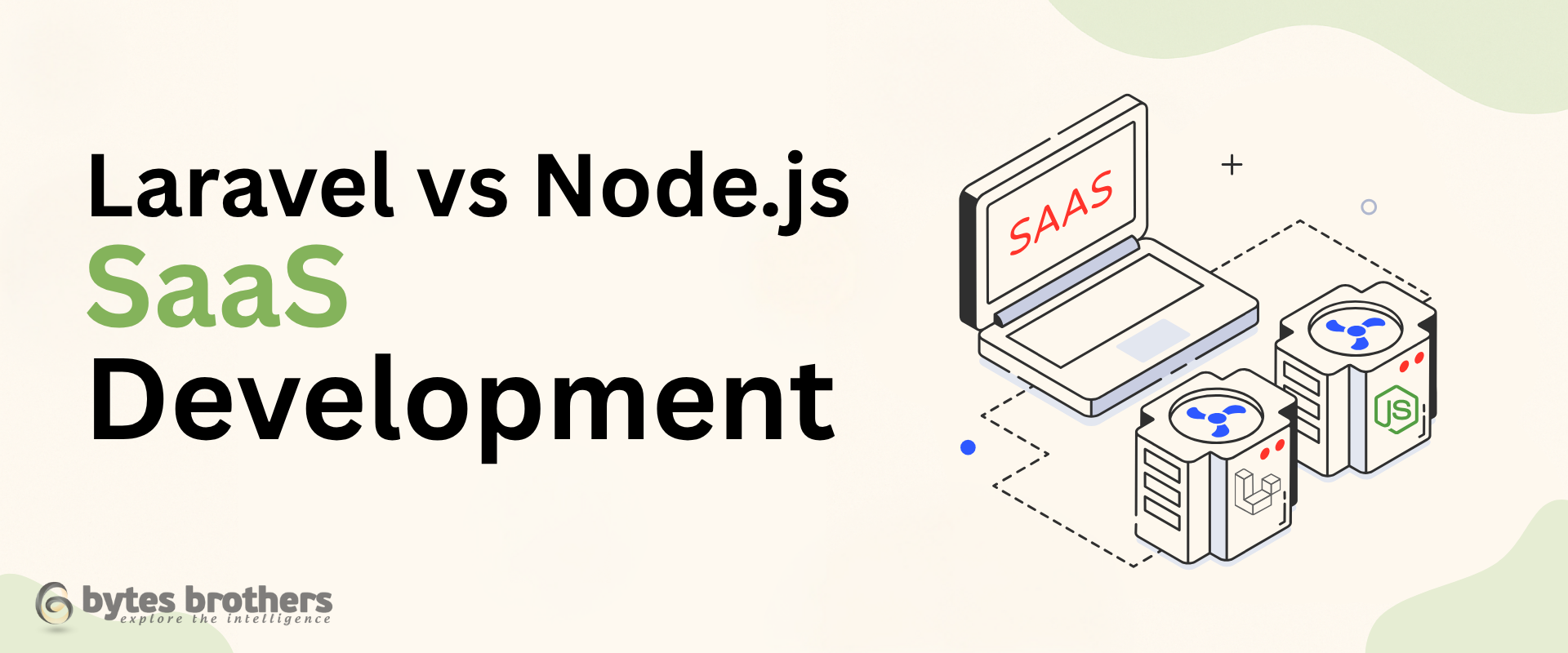Laravel vs Node.js for Building Scalable SaaS Development

Choosing the right backend stack can make or break your SaaS product. In 2025, the debate between Laravel vs Node.js continues as these two heavyweight contenders dominate. But which is right for your startup?
Key Takeaways
- Understand the technical and business trade-offs between Laravel vs Node.js
- Learn when the Laravel PHP framework offers speed, structure, and security advantages
- Discover Node.js’s edge in real-time, event-driven applications
- Explore real-world use cases for both stacks
- Get expert guidance on which stack fits your SaaS goals
Why Backend Stack Matters in SaaS
Your backend architecture is more than code-it’s the foundation for scalability, performance, and long-term maintenance. The wrong choice can result in missed deadlines, scaling limitations, or even total rewrites.
Whether you’re launching an MVP or scaling past Series A, selecting the right backend is a strategic decision-not just a technical one.
Laravel: A Proven Foundation for Structured SaaS
What Is Laravel?
Laravel is a modern PHP framework designed to make web application development more elegant and efficient. It’s favored for projects where rapid development, built-in features, and a strong architectural foundation are essential.
Laravel Advantages
- Mature Ecosystem: Laravel Forge, Vapor, and Nova accelerate DevOps, hosting, and admin tooling.
- Batteries-Included Philosophy: Built-in support for routing, ORM (Eloquent), migrations, queuing, and authentication.
- Security-First Defaults: Out-of-the-box protections against SQL injection, XSS, and CSRF.
- Elegant Syntax and Convention: Ideal for teams that want productivity without sacrificing code maintainability.
When Laravel Works Best:
- B2B SaaS platforms with dashboards and CRUD-heavy features
- Startups prioritizing rapid MVP release with secure architecture
- Teams familiar with PHP or migrating from WordPress-based environments
Real-World Example:
Laravel Spark is used by hundreds of startups to launch SaaS apps quickly. It includes billing (Stripe), user teams, invoicing, and subscription logic out-of-the-box.
Node.js: Performance Meets Real-Time Interactivity
What Is Node.js?
Node.js is a server-side JavaScript runtime built on Chrome’s V8 engine. It’s event-driven, non-blocking, and ideal for building scalable applications-especially when concurrency or real-time features are key.
Strengths of Node.js
- Asynchronous & Non-Blocking I/O: Enables fast, scalable APIs for data-intensive apps.
- Same Language Across Stack: JavaScript on both frontend (React/Vue) and backend reduces context switching.
- Rich NPM Ecosystem: Thousands of packages and integrations for payments, real-time communication, and auth.
- Excellent for Real-Time Apps: Chat, streaming, and collaboration tools shine here.
When Node.js Works Best:
- SaaS platforms with real-time data (collaborative editing, live metrics, chat)
- APIs that need to handle high concurrency and throughput
- Teams that are already JavaScript-heavy
Real-World Example:
Trello, a real-time task collaboration tool, uses Node.js to handle thousands of concurrent connections with low latency.
Laravel vs Node.js: Comparison Breakdown
| Feature | Laravel (PHP) | Node.js (JavaScript) |
|---|---|---|
| Language | PHP (Laravel PHP framework) | JavaScript (runtime) |
| Architecture | MVC (opinionated) | Unopinionated, more manual setup |
| Real-time Capability | Limited (needs Laravel Echo, Pusher) | Native support with WebSockets |
| Ecosystem Tools | Spark, Forge, Nova | NPM, Express, NestJS, Socket.io |
| Community Support | Mature, especially in enterprise | Huge open-source JS community |
| Performance | Great for CRUD, admin, API-first SaaS | Better for concurrent I/O operations |
Key Decision Factors for Founders
1. Team Experience
If your developers are PHP-savvy, leveraging Laravel advantages will speed up development. If your team is full-stack JavaScript, Node.js offers continuity and faster iteration.
2. Product Requirements
Need real-time features like notifications, chat, or analytics dashboards? Node.js gives you an edge. Building a structured admin-heavy SaaS with user roles, billing, and content? Laravel simplifies the backend significantly.
3. Long-Term Maintainability
Laravel’s convention-over-configuration helps maintain code quality as teams scale. Node.js offers more flexibility-but demands architectural discipline to avoid technical debt.
Conclusion: Choose What Aligns With Your Vision
There is no universal winner in the Laravel vs Node.js debate. What matters is how each aligns with your product’s complexity, team strengths, and future roadmap.
Need help deciding or building? Our team at Bytes Brothers has launched successful SaaS products on both stacks-from lean MVPs to enterprise-grade platforms.
Explore our SaaS MVP Development Services to learn how we deliver SaaS products that scale.
Start With Confidence. Build With Expertise.
Get a Free Technical Consultation
Let’s talk about your product idea, tech constraints, and roadmap. We’ll help you evaluate Laravel, Node.js, and beyond-so you launch faster and smarter.